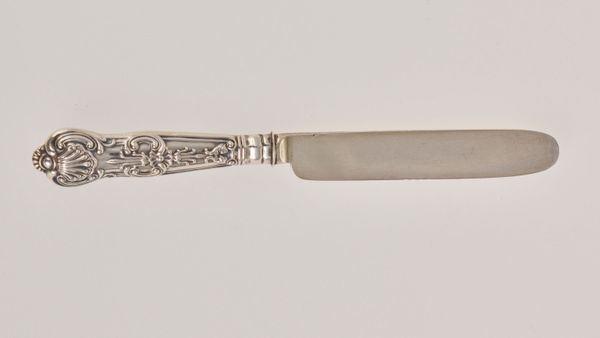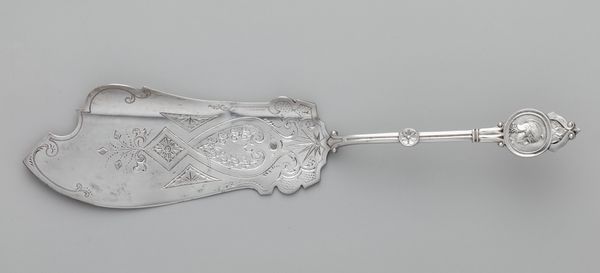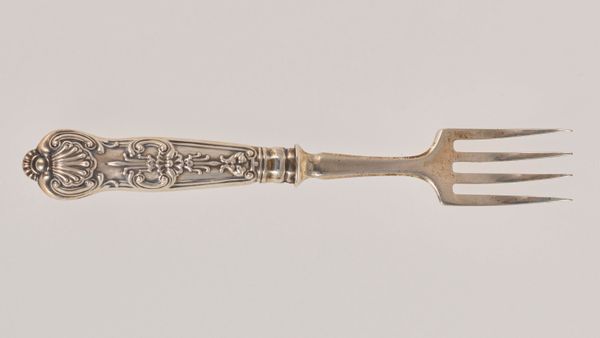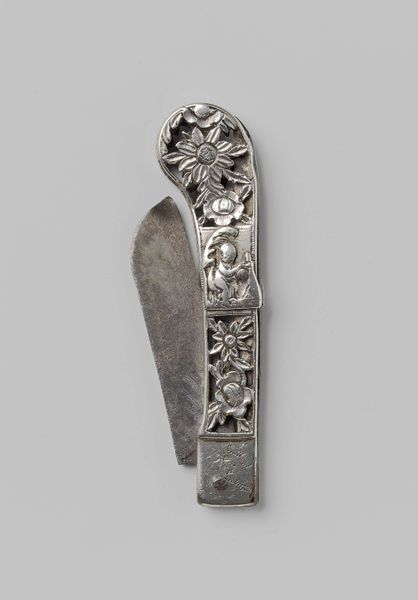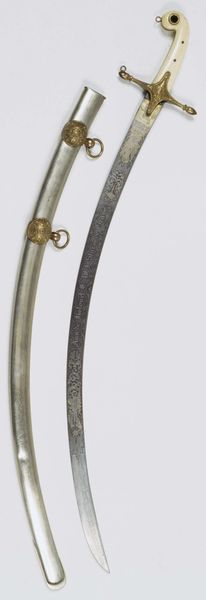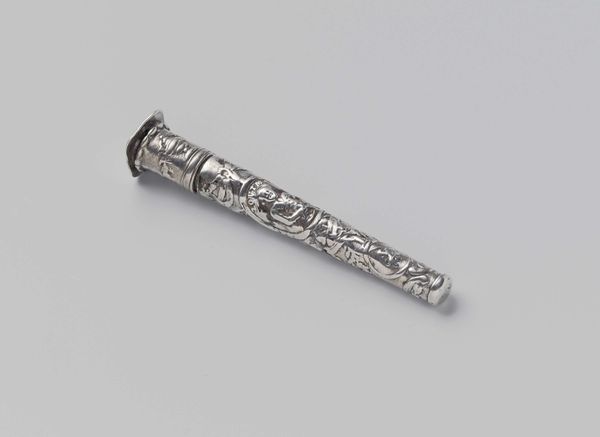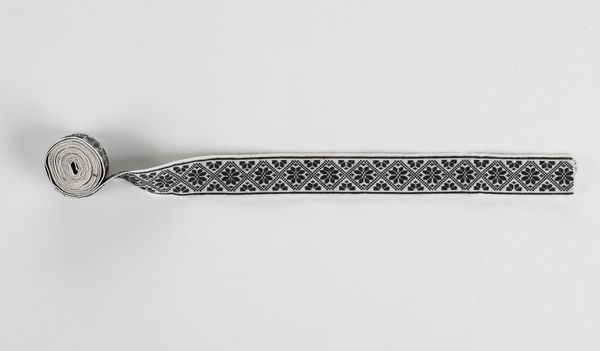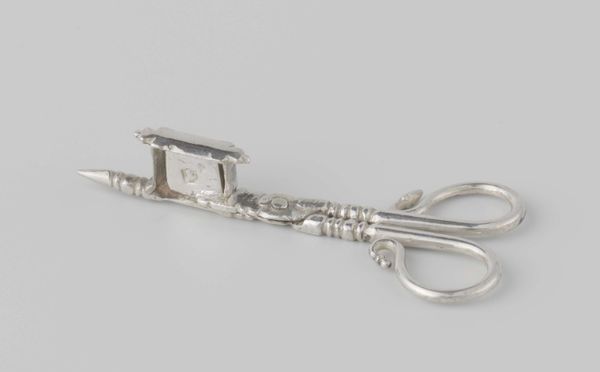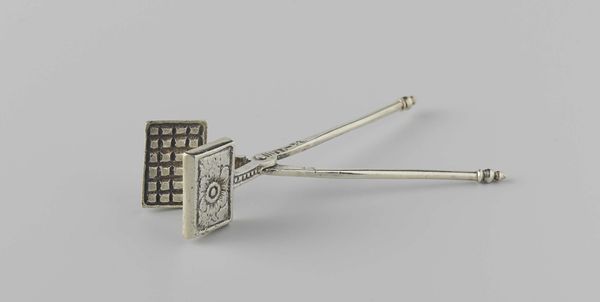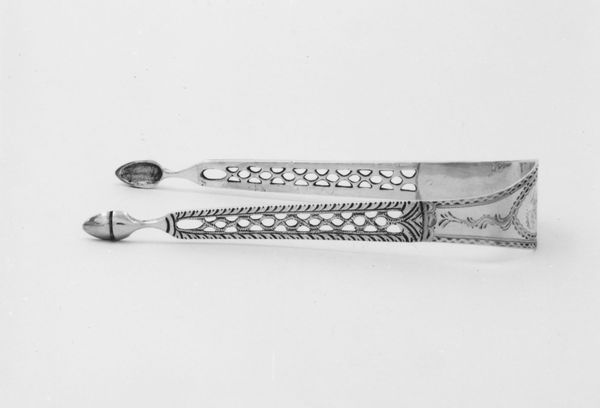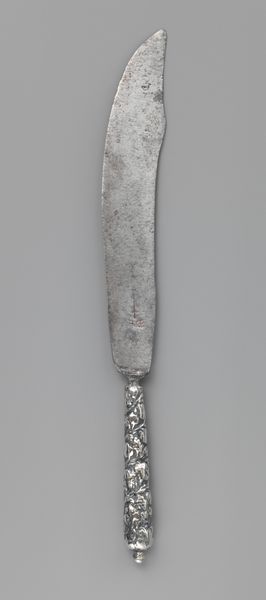
silver, metal, photography
#
silver
#
baroque
#
metal
#
photography
#
decorative-art
Copyright: Rijks Museum: Open Domain
Editor: Here we have a silver table knife, dating back to 1740, attributed to Pieter van de Ronden. Its simple, almost brutal form really jumps out. What's your read on a piece like this? Curator: Brutal is interesting! I see something…intimate. Imagine the hands that held it, the meals it participated in, the conversations it witnessed. It’s a quiet witness to a very specific moment in time. The Baroque era was known for opulence, but this…this whispers of everyday life, of something much more grounded. Does it make you wonder who it served? Editor: Definitely! The engravings suggest maybe a family crest of sorts, or maybe just the silversmith's marks. Is it unusual to find such detailed work on something as functional as a knife? Curator: Not necessarily. Think about it – even the simplest tools can become treasured objects. This isn't just about cutting food; it's about artistry meeting utility, pride in craftsmanship, and leaving a mark, literally, on the world. Don’t you get the sense someone savored the making? Editor: I do now! I was too focused on its starkness. Curator: Isn't that the joy of art? To surprise us, to offer a new perspective each time we look? Next time you find yourself at a table, think of this humble knife and the stories it holds. Editor: Absolutely, I'll never look at silverware the same way again! Curator: And maybe that’s the point; to see the extraordinary in the ordinary.
Comments
No comments
Be the first to comment and join the conversation on the ultimate creative platform.
